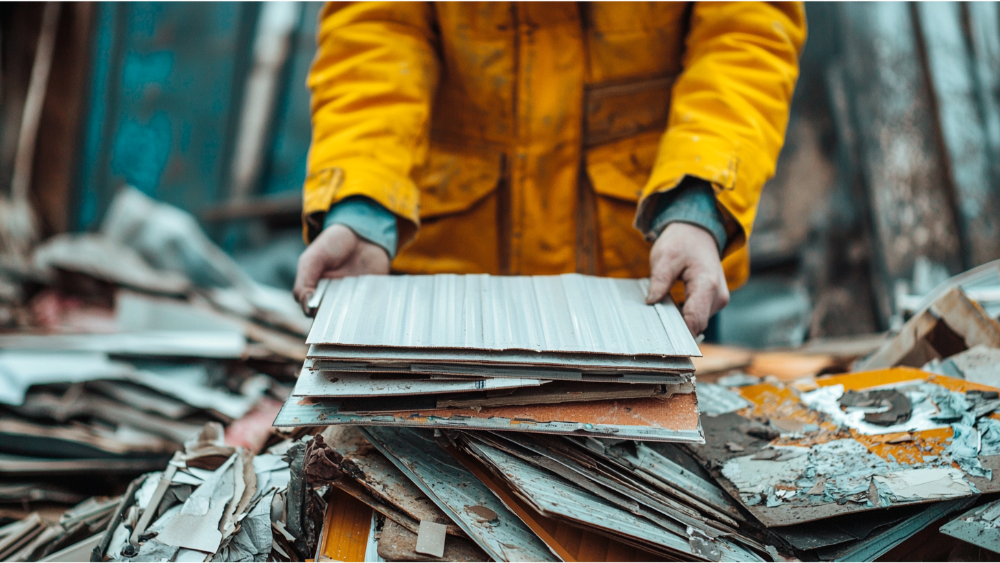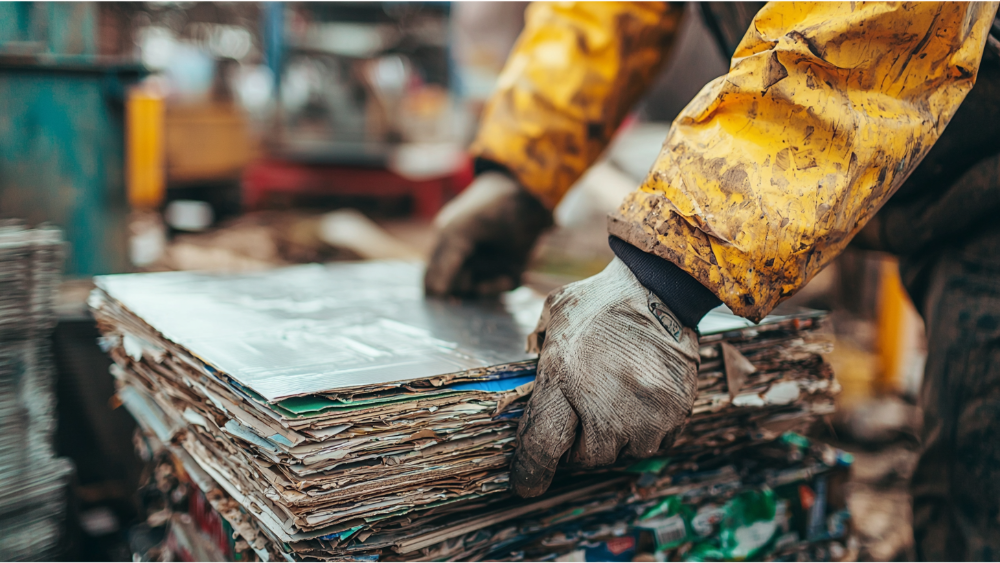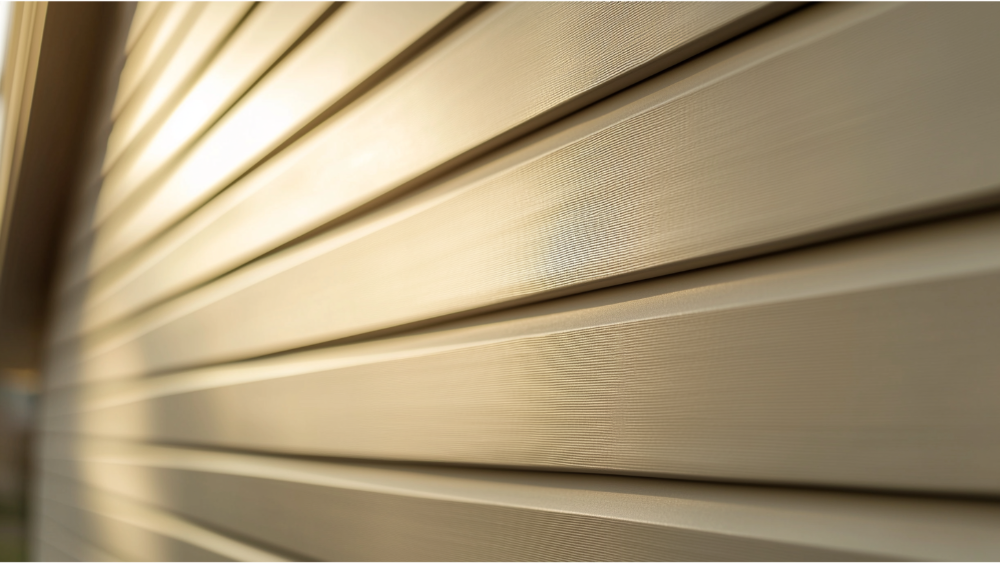How Long Will Vinyl Sidi...
- Mon to Fri: 09:00 am to 07:00 pm

Vinyl siding is a popular choice for homeowners due to its durability, affordability, and low maintenance requirements. However, as environmental concerns continue to grow, many people are left wondering about the recyclability of vinyl siding. Can this commonly used material be repurposed or recycled to reduce its impact on landfills? Understanding the environmental footprint of vinyl siding and the options available for its disposal is essential for making eco-conscious decisions. Read on to explore whether vinyl siding is recyclable and what steps can be taken to ensure responsible handling of this material.
Yes, vinyl siding can be recycled, but the process is not as straightforward as recycling other materials like glass or aluminum. Since vinyl siding is made from polyvinyl chloride (PVC), a type of plastic, it requires specialized facilities that can handle and process the material. Many recycling centers do not accept PVC due to the complexity of breaking it down and the need for specific equipment.
However, some manufacturers and dedicated recycling programs collect old vinyl siding for reuse, turning it into new building materials or other products. To recycle vinyl siding, it’s important to check with local recycling services, manufacturers, or home improvement stores to find programs that accept it.

Vinyl siding is a type of plastic polymer used as an exterior covering on buildings. It is made primarily from PVC (polyvinyl chloride) resin and various additives such as pigments, stabilizers, and modifiers. This combination gives vinyl siding its strength, colorfastness, and weather resistance.

The recycling process for vinyl siding is a detailed and efficient system that transforms old materials into new, usable products, reducing environmental impact. Here’s how it works:
Vinyl siding scrap is collected from construction sites, renovation projects, or recycling centers. It is then sorted by color, type, and condition to ensure the recycling process runs smoothly and efficiently. Proper sorting is crucial for maintaining quality and reducing processing time.
The sorted siding is processed through industrial shredders or grinders to break it down into small pieces or flakes. This step ensures the material is manageable for cleaning and melting.
The vinyl flakes are thoroughly cleaned to remove contaminants such as nails, screws, adhesives, paint, or dirt. Some facilities use advanced washing systems to ensure the recycled material is as pure as possible, which is essential for creating high-quality new products.
The cleaned flakes are heated to high temperatures, melting the vinyl into a liquid form. This step allows the material to be reshaped and repurposed for different uses, ensuring minimal waste.
The melted vinyl is poured into molds or extruded into specific shapes to create new products. These can include items like new siding, flooring, piping, or even outdoor furniture, showcasing vinyl’s versatility as a recycled material.
Every batch of recycled vinyl is inspected to ensure it meets strict quality and durability standards. This involves testing the material for strength, flexibility, and consistency to ensure it is fit for reuse in various industries.
Once approved, the recycled products are distributed to manufacturers, retailers, or directly to end-users. They are used in construction, landscaping, home improvement, and other applications, completing the recycling loop.
This comprehensive process not only reduces waste but also conserves resources and energy, making vinyl siding recycling an essential part of sustainable practices in modern industries. By reusing vinyl instead of producing new materials, we can significantly reduce our carbon footprint and promote a circular economy.
The good news is that vinyl siding is recyclable! It has been estimated that up to 99% of post-consumer vinyl siding can be recycled. However, there are some limitations when it comes to the recyclability of vinyl siding.
The main challenge is that vinyl siding is often mixed with other materials during demolition, such as wood or insulation, making it more difficult to recycle. Additionally, the recycling process for vinyl siding can be costly and requires specialized equipment.

Despite these challenges, there are still ways to recycle vinyl siding. Here are some options:
Recycling vinyl siding offers significant environmental and economic benefits, but it also comes with challenges like logistics and energy use. Understanding these pros and cons is essential for making informed decisions about sustainability efforts.

At Pro Superior Construction, we pride ourselves on being the premier choice for all your vinyl siding needs. With years of experience and a dedicated team of experts, we provide top-quality products and unparalleled customer service.
Whether you’re looking for installation, maintenance, or advice on recycling your old vinyl siding, we’ve got you covered. We use only the highest-grade materials and advanced techniques to ensure that your siding not only looks stunning but also lasts for years to come.
Plus, our commitment to sustainability makes us the perfect partner for eco-conscious homeowners. Trust Pro Superior Construction to deliver excellence every time—your home deserves nothing less.
It is not recommended to attempt recycling vinyl siding on your own as it requires specialized equipment and expertise. Improper handling can lead to contamination of the material or potential harm to yourself. Instead, it is best to contact a local recycling facility or dedicated vinyl siding recycler. Some manufacturers also offer take-back programs where they will handle the recycling process for you.
Vinyl siding is estimated to take 300-400 years to fully degrade in a landfill. During this time, it can leach harmful chemicals into the surrounding environment. Recycling is a much more sustainable option, helping to conserve resources, reduce landfill waste, and minimize environmental impact.
Recycled vinyl siding can be repurposed into various products, such as flooring, piping, fencing, and even new construction materials like siding or decking. Recycling old siding not only reduces waste but also requires less energy compared to creating new materials from scratch. This process supports a circular economy and helps the construction industry move toward more sustainable practices.

In conclusion, vinyl siding is indeed recyclable. While there are challenges to the recycling process of this material, there are still options available for those looking to recycle their old vinyl siding.
By doing so, we can help reduce waste and create a more sustainable future for generations to come. Remember to consider recycling when it comes time to replace your vinyl siding. Every small effort counts towards creating a better environment.
Thank you for reading! Keep exploring Pro Superior Construction for more informative articles on home improvement and sustainability.